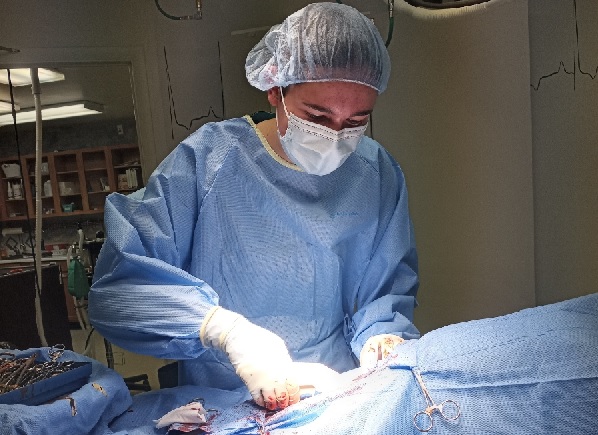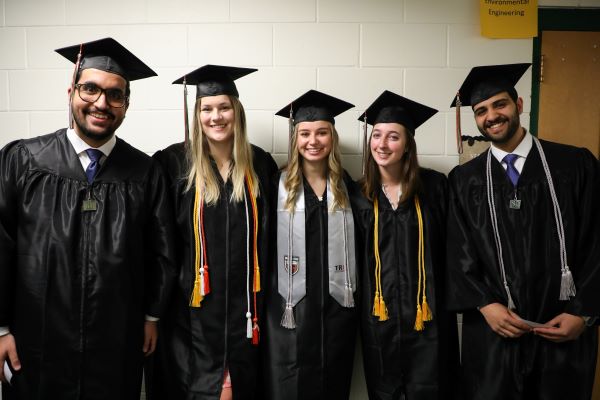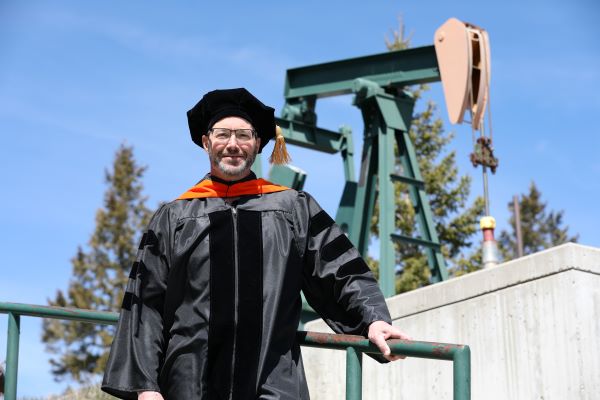Internship, job opportunities help pre-veterinary student boost resume for professional school application

For Aubrey Teller, the answer to “What do you want to do when you grow up?” has always been simple.
“From a young age, I always knew I wanted to work with animals, especially in the medical field,” Teller remembers. “My favorite animal is horses, and I want to be a large animal and small animal veterinarian.”
Teller is a junior majoring in biological sciences at Montana Technological University. She’s the daughter of a geological engineering alumnus and has lived all over the country. She graduated from high school in North Dakota, after residing in Oklahoma, Pennsylvania and New Mexico. Her parents were from Western Montana, and it’s always been a place to return to.
“Butte has always been my home,” Teller said. “I just love it here.”
When it came time to apply for an undergraduate program prior to veterinary school, Montana Tech felt like the natural fit. Teller did wonder if the university, known as an engineering powerhouse, could also deliver an adequate pre-veterinary education. Two years later, Teller’s resume includes internship, work, volunteer, research and animal-related experiences that will help her apply to veterinary school next year.
“Montana Tech is a great school,” Teller said. “The classes are challenging, and preparing me for vet school.”
Teller’s growing log of experience is an essential part of the pre-veterinary experience. Data collected by the Association of American Veterinary Medical Colleges (AAVMC) indicates an average veterinary school applicant logs 1,100 hours of experience with animals. That’s equivalent to six months of full-time work.
For Teller, the animal experience started early on. In high school she worked at a dog grooming business.
“It wasn’t a pretty job because I was cleaning out kennels,” Teller said. “But it was a great experience because I was learning how to handle and hold animals. Those are important things to understand if you want to be a vet.”
From there, Teller worked at a saddlery, where she learned how saddles were made for horses, and saw equine acupuncture in action. Once Teller arrived in Butte, she found the local community and Montana Tech had opportunities she needed to gain knowledge and experience to be a competitive veterinary applicant.
Teller assists Dr. Amy Kuenzi in research of sin nombre hantavirus. The research involves wearing a respirator and collecting blood samples from deer mice in the field. Teller has learned how to ethically collect samples and handle the mice involved and has plans to focus her senior thesis project on how artificial nesting boxes might be integrated into Kuenzi’s research.
When she’s not in class, Teller works at the Butte Veterinary Clinic as a cleaner. In the summers, her work expands to that of a veterinary technician.
“I really wanted to get a job in a vet clinic to see how things ran and to learn more about procedures, vaccine appointments, what kind of questions the vet asks and how you cycle through the problem solving for an animal,” Teller said.
Last summer she had a formal internship with the clinic where she assisted with surgeries. She saw the leg amputation of a chicken, and the neuter of a pig. She encountered pets that had eaten socks, rope, and toys and needed them removed. Photos show Teller scrubbed up, in full surgical dress, instruments in hand.
“My role was to hold open the incision site so the vet could attach the stomach to the intestinal wall,” Teller explained. “I would also monitor surgeries. I monitored vitals and ensured the patient stayed under anesthesia.”
Teller worked with Career Services to make sure she got academic credit for the internship. Teller has also taken as many animal-related courses as possible on campus, including Biology 305: The Natural History of Vertebrae with Dr. Kuenzi.
“It’s Tech’s most animal oriented class,” Teller said. “You look at the animal skulls and see the difference between herbivores and carnivores and how you would identify a skull if you found it.”
The class included a field trip to Warm Springs Ponds, where students observed some of the animals of the same species as the skulls studied.
“I learned a lot about the native species of Montana, how to identify them, and how to determine if you’ve encountered a subspecies within the species.”
Over the next year Teller plans to focus on keeping her GPA high, which is another admission requirement of veterinary schools. She’s hoping to land a spot in the competitive WIMU Regional Program in Veterinary Medicine, which allows students to complete their first year of veterinary school at Montana State University in Bozeman, before completing years two and three at Washington State University in Pullman, Washington. Year 4 includes clinical rotations throughout Montana, Idaho, Utah and Washington.
Once she’s a veterinarian, Teller hopes to live in the country outside of Butte.
“Hopefully, I’ll own a horse or two of my own,” Teller said.



